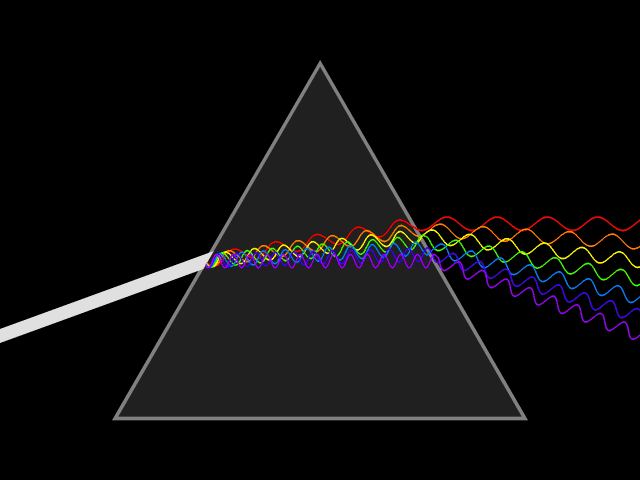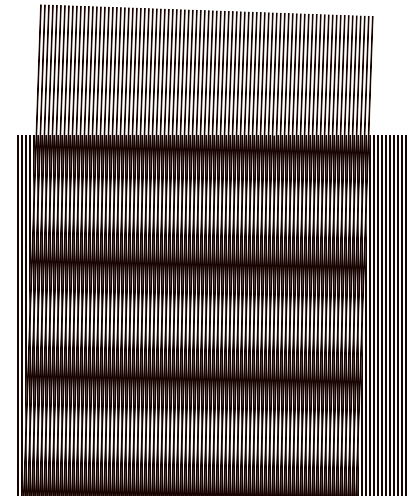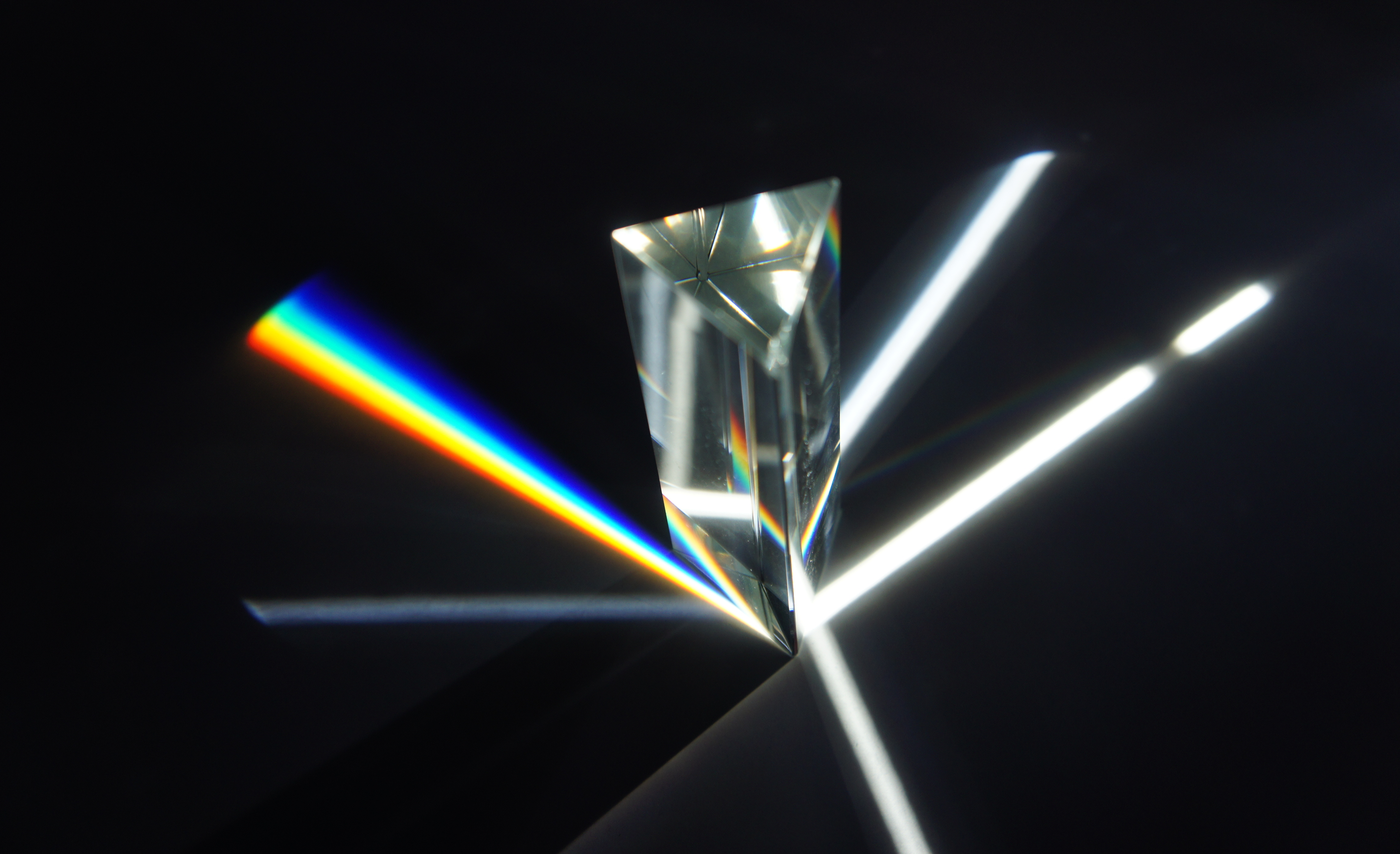|
Time Stretch Dispersive Fourier Transform
Time stretch dispersive Fourier transform (TS-DFT), otherwise known as time-stretch transform (TST), temporal Fourier transform or photonic time-stretch (PTS) is a spectroscopy technique that uses optical dispersion instead of a grating or prism to separate the light wavelengths and analyze the optical spectrum in real-time. It employs group-velocity dispersion ( GVD) to transform the spectrum of a broadband optical pulse into a time stretched temporal waveform. It is used to perform Fourier transformation on an optical signal on a single shot basis and at high frame rates for real-time analysis of fast dynamic processes. It replaces a diffraction grating and detector array with a dispersive fiber and single-pixel detector, enabling ultrafast real-time spectroscopy and imaging. Its nonuniform variant, warped-stretch transform, realized with nonlinear group delay, offers variable-rate spectral domain sampling, as well as the ability to engineer the time-bandwidth product of the sig ... [...More Info...] [...Related Items...] OR: [Wikipedia] [Google] [Baidu] |
Photonic
Photonics is a branch of optics that involves the application of generation, detection, and manipulation of light in the form of photons through emission, transmission, modulation, signal processing, switching, amplification, and sensing. Even though photonics is a commonly used term, there is no widespread agreement on a clear definition of the term or on the difference between photonics and related fields, such as optics. Photonics is closely related to quantum electronics, where quantum electronics deals with the theoretical part of it while photonics deal with its engineering applications. Though covering all light's technical applications over the whole spectrum, most photonic applications are in the range of visible and near-infrared light. The term ''photonics'' developed as an outgrowth of the first practical semiconductor light emitters invented in the early 1960s and optical fibers developed in the 1970s. History The word 'Photonics' is derived from the Greek wor ... [...More Info...] [...Related Items...] OR: [Wikipedia] [Google] [Baidu] |
Spectroscopy
Spectroscopy is the field of study that measures and interprets electromagnetic spectra. In narrower contexts, spectroscopy is the precise study of color as generalized from visible light to all bands of the electromagnetic spectrum. Spectroscopy, primarily in the electromagnetic spectrum, is a fundamental exploratory tool in the fields of astronomy, chemistry, materials science, and physics, allowing the composition, physical structure and electronic structure of matter to be investigated at the atomic, molecular and macro scale, and over astronomical distances. Historically, spectroscopy originated as the study of the wavelength dependence of the absorption by gas phase matter of visible light dispersed by a prism. Current applications of spectroscopy include biomedical spectroscopy in the areas of tissue analysis and medical imaging. Matter waves and acoustic waves can also be considered forms of radiative energy, and recently gravitational waves have been associa ... [...More Info...] [...Related Items...] OR: [Wikipedia] [Google] [Baidu] |
Dispersion (optics)
Dispersion is the phenomenon in which the phase velocity of a wave depends on its frequency. Sometimes the term chromatic dispersion is used to refer to optics specifically, as opposed to wave propagation in general. A medium having this common property may be termed a dispersive medium. Although the term is used in the field of optics to describe light and other electromagnetic waves, dispersion in the same sense can apply to any sort of wave motion such as acoustic dispersion in the case of sound and seismic waves, and in gravity waves (ocean waves). Within optics, dispersion is a property of telecommunication signals along transmission lines (such as microwaves in coaxial cable) or the Pulse (signal processing), pulses of light in optical fiber. In optics, one important and familiar consequence of dispersion is the change in the angle of refraction of different colors of light, as seen in the spectrum produced by a dispersive Prism (optics), prism and in chromatic aberration ... [...More Info...] [...Related Items...] OR: [Wikipedia] [Google] [Baidu] |
Grating
A grating is any regularly spaced collection of essentially identical, parallel, elongated elements. Gratings usually consist of a single set of elongated elements, but can consist of two sets, in which case the second set is usually perpendicular to the first (as illustrated). When the two sets are perpendicular, this is also known as a grid (as in grid paper) or a mesh. As filters A grating covering a drain (as illustrated) can be a collection of iron bars (the identical, elongated elements) held together (to ensure the bars are parallel and regularly spaced) by a lighter iron frame. Gratings over drains and air vents are used as filters, to block movement of large solids (e.g. people) and to allow movement of liquids. A register is a type of grating used in heating, ventilation, and air conditioning, which transmits air, while stopping solid objects. File:Vindobona Hoher Markt-71.JPG, Grating - drain cover, ancient Roman architecture at Vindobona, Austria. File:Montr ... [...More Info...] [...Related Items...] OR: [Wikipedia] [Google] [Baidu] |
Prism (optics)
An optical prism is a transparent optical element with flat, polished surfaces that are designed to refract light. At least one surface must be angled—elements with two parallel surfaces are ''not'' prisms. The most familiar type of optical prism is the triangular prism, which has a triangular base and rectangular sides. Not all optical prisms are geometric prisms, and not all geometric prisms would count as an optical prism. Prisms can be made from any material that is transparent to the wavelengths for which they are designed. Typical materials include glass, acrylic and fluorite. A dispersive prism can be used to break white light up into its constituent spectral colors (the colors of the rainbow) to form a spectrum as described in the following section. Other types of prisms noted below can be used to reflect light, or to split light into components with different polarizations. Types Dispersive ''Dispersive prisms'' are used to break up light into its ... [...More Info...] [...Related Items...] OR: [Wikipedia] [Google] [Baidu] |
Wavelength
In physics and mathematics, wavelength or spatial period of a wave or periodic function is the distance over which the wave's shape repeats. In other words, it is the distance between consecutive corresponding points of the same ''phase (waves), phase'' on the wave, such as two adjacent crests, troughs, or zero crossings. Wavelength is a characteristic of both traveling waves and standing waves, as well as other spatial wave patterns. The multiplicative inverse, inverse of the wavelength is called the ''spatial frequency''. Wavelength is commonly designated by the Greek letter lambda (''λ''). For a modulated wave, ''wavelength'' may refer to the carrier wavelength of the signal. The term ''wavelength'' may also apply to the repeating envelope (mathematics), envelope of modulated waves or waves formed by Interference (wave propagation), interference of several sinusoids. Assuming a sinusoidal wave moving at a fixed phase velocity, wave speed, wavelength is inversely proportion ... [...More Info...] [...Related Items...] OR: [Wikipedia] [Google] [Baidu] |
Dispersion (optics)
Dispersion is the phenomenon in which the phase velocity of a wave depends on its frequency. Sometimes the term chromatic dispersion is used to refer to optics specifically, as opposed to wave propagation in general. A medium having this common property may be termed a dispersive medium. Although the term is used in the field of optics to describe light and other electromagnetic waves, dispersion in the same sense can apply to any sort of wave motion such as acoustic dispersion in the case of sound and seismic waves, and in gravity waves (ocean waves). Within optics, dispersion is a property of telecommunication signals along transmission lines (such as microwaves in coaxial cable) or the Pulse (signal processing), pulses of light in optical fiber. In optics, one important and familiar consequence of dispersion is the change in the angle of refraction of different colors of light, as seen in the spectrum produced by a dispersive Prism (optics), prism and in chromatic aberration ... [...More Info...] [...Related Items...] OR: [Wikipedia] [Google] [Baidu] |
Optical Imaging
Medical optical imaging is the use of light as an investigational imaging technique for medical applications, pioneered by American Physical Chemist Britton Chance. Examples include optical microscopy, spectroscopy, endoscopy, scanning laser ophthalmoscopy, laser Doppler imaging, optical coherence tomography, and transdermal optical imaging. Because light is an electromagnetic wave, similar phenomena occur in X-rays, microwaves, and radio waves. Optical imaging systems may be divided into diffusive and ballistic imaging systems. A model for photon migration in turbid biological media has been developed by Bonner et al. Such a model can be applied for interpretation data obtained from laser Doppler blood-flow monitors and for designing protocols for therapeutic excitation of tissue chromophores. Diffusive optical imaging Diffuse optical imaging (DOI) is a method of imaging using near-infrared spectroscopy (NIRS) or fluorescence-based methods. When used to create 3D ... [...More Info...] [...Related Items...] OR: [Wikipedia] [Google] [Baidu] |
Stimulated Raman Scattering
In chemistry and physics, Raman scattering or the Raman effect () is the inelastic scattering of photons by matter, meaning that there is both an exchange of energy and a change in the light's direction. Typically this effect involves vibrational energy being gained by a molecule as incident photons from a visible laser are shifted to lower energy. This is called ''normal Stokes-Raman scattering''. Light has a certain probability of being scattered by a material. When photons are scattered, most of them are elastically scattered (Rayleigh scattering), such that the scattered photons have the same energy (frequency, wavelength, and therefore color) as the incident photons, but different direction. Rayleigh scattering usually has an intensity in the range 0.1% to 0.01% relative to that of a radiation source. An even smaller fraction of the scattered photons (about 1 in a million) can be scattered ''inelastically'', with the scattered photons having an energy different (usually lo ... [...More Info...] [...Related Items...] OR: [Wikipedia] [Google] [Baidu] |
Time Stretch Analog-to-digital Converter
The time-stretch analog-to-digital converter (TS-ADC), also known as the time-stretch enhanced recorder (TiSER), is an analog-to-digital converter (ADC) system that has the capability of digitizing very high Bandwidth (signal processing), bandwidth Signal (electrical engineering), signals that cannot be captured by conventional Electronics, electronic ADCs. Alternatively, it is also known as the photonic time-stretch (PTS) digitizer,J. Capmany and Dalma Novak, D. Novak, "Microwave photonics combines two worlds," ''Nature Photonics'' 1, 319-330 (2007)/ref> since it uses an Optics, optical Front-end and back-end, frontend. It relies on the process of time-stretch, which effectively slows down the analog signal in time (or compresses its bandwidth) before it can be digitized by a standard electronic ADC. Background There is a huge demand for very high-speed analog-to-digital converters (ADCs), as they are needed for Electronic test equipment, test and measurement equipment in laborat ... [...More Info...] [...Related Items...] OR: [Wikipedia] [Google] [Baidu] |
Serial Time-encoded Amplified Microscopy (STEAM)
Serial may refer to: Arts, entertainment, and media The presentation of works in sequential segments * Serial (literature), serialised literature in print * Serial (publishing), periodical publications and newspapers * Serial (radio and television), series of radio and television programs that rely on a continuing plot * Serial film, a series of short subjects, with a continuing story, originally shown in theaters, in conjunction with feature films, particularly in the 1930s and 1940s * Indian serial, a type of Indian television program Other uses in arts, entertainment, and media * ''Serial'' (1980 film), based on McFadden's novel, starring Martin Mull and Tuesday Weld * ''Serial'' (podcast), a podcast spinoff of radio series ''This American Life'' * '' The Serial: A Year in the Life of Marin County'', a 1977 novel by Cyra McFadden Computing and technology * SerDes, a Serializer/Deserializer (pronounced sir-deez) * Serial ATA * Serial attached SCSI * Serial bus, e.g., **I� ... [...More Info...] [...Related Items...] OR: [Wikipedia] [Google] [Baidu] |
Phase Stretch Transform
Phase stretch transform (PST) is a computational approach to signal and image processing. One of its utilities is for feature detection and classification.M. H. Asghari, and B. Jalali, "Edge detection in digital images using dispersive phase stretch", International Journal of Biomedical Imaging, Vol. 2015, Article ID 687819, pp. 1–6 (2015). PST is related to time stretch dispersive Fourier transform. It transforms the image by emulating propagation through a diffractive medium with engineered 3D dispersive property (refractive index). The operation relies on symmetry of the dispersion profile and can be understood in terms of dispersive eigenfunctions or stretch modes.B. Jalali and A. Mahjoubfar, "Tailoring Wideband Signals With a Photonic Hardware Accelerator", Proceedings of the IEEE, Vol. 103, No. 7, pp. 1071–1086 (2015). PST performs similar functionality as phase-contrast microscopy, but on digital images. PST can be applied to digital images and temporal (time se ... [...More Info...] [...Related Items...] OR: [Wikipedia] [Google] [Baidu] |






